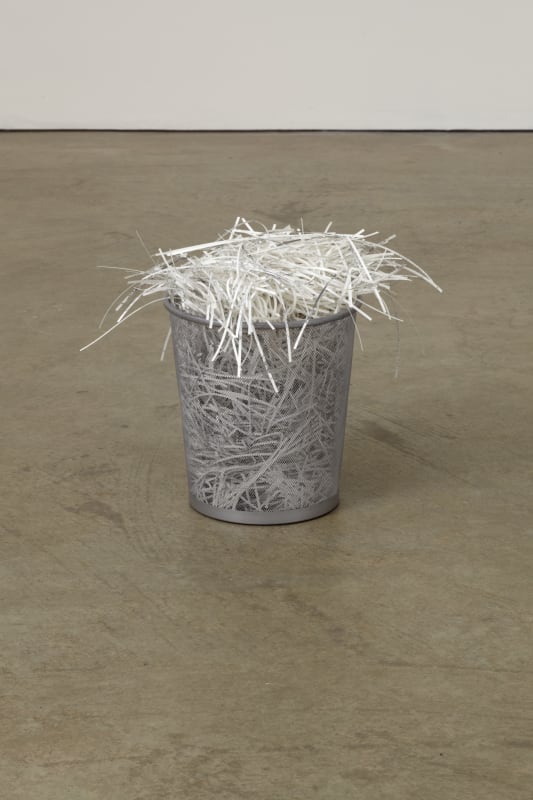The gallery is pleased to present its second solo exhibition with Romanian artist Ciprian Muresan. The exhibition brings together recent video, works on paper and photography.
The central work of the exhibition, Shredded Masaccio Book, presents the shredded paper remains of a hand-drawn version of Ornella Casazza’s text on the Italian Renaissance painter Masaccio. Titled Masaccio: and the Brancacci Chapel and published by Scala/Riverside (1990), the Italian artist Masaccio died at the young age of 26, while Muresan’s pencil-drawn book likewise had a short life, remaining in tact only for the days that it took for the artist to complete its pages. Before deconstructing the book, Muresan documented its pages and converted them into the form of a video slideshow. Nonetheless, Muresan invites the individual who purchases the work to devote an extensive amount of his or her time to taping the paper fragments back together.
Untitled (From the Story ‘Invisible Clerk’ by Ilf and Petrov) depicts scenes from the story of the ‘Invisible Clerk' by Russian novelists Ilf and Petrov. The etchings tell a satirical story of monumental public sculpture. Prior to the exhibition, Muresan hid these etchings within The National Art Museum in Cluj, rendering them inaccessible to the Romanian public, and exposing viewers to the work for the first time here at Wilkinson Gallery. Comparably, Untitled (Sculpture Photographs 1-5) document Muresan’s recent intervention involving a series of sculptures currently on display at the National Art Museum in Cluj. For this project, the artist hints at the potential destabilization of provincial Romanian sculpture with novels ranging from P.L Travers’ Mary Poppins to the Strugatsky Brothers’ Roadside Picnic.
For the video piece Untitled, Muresan worked with two stage directors to simultaneously orchestrate two different performances on the same stage. The directors were given complete freedom in choosing the play they would stage, while both they and the participating actors remained unaware of what the other group would perform, until both parties got on stage. Through this forced overlap, Muresan generates a new text, but also creates moments of chaos and harmony, thereby extending the communicative boundaries of the two individual theatre pieces.

